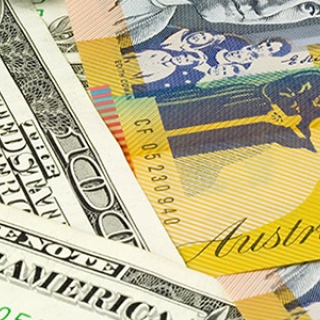


The Australian dollar (AUD) continued its gains against the US dollar (USD) on Monday (14/4), supported by improving risk sentiment. The AUD/USD pair strengthened after US President Donald Trump announced less stringent tariffs on Chinese imports, including semiconductors and electronics, on Sunday night. Clarifying earlier speculation about exemptions, Trump confirmed these goods would remain subject to the existing 20% tariffs on fentanyl, instead of the previously suggested 145% tariff.
Stronger commodity prices provided further support for the Australian dollar. However, persistent trade tensions between the US and China continue to weigh on the outlook, especially given Australia's heavy reliance on Chinese demand and exports.
China's March Trade Balance, measured in Chinese Yuan (CNY), posted a substantial increase to CNY 736.72 billion, up sharply from CNY 122 billion in the previous month. In US Dollar (USD) terms, the trade surplus also beat expectations, reaching $102.6 billion—well above the $77 billion forecast, though lower than the previous estimate of $170.51 billion.
China's General Administration of Customs acknowledged the challenges facing the country's exports, calling the current external environment "complex and severe." Nonetheless, officials expressed confidence, stating that "the sky will not fall." They reported a solid start to the year, with foreign trade showing growth in both volume and quality. The agency also stressed China's commitment to taking all necessary measures to counter US actions and to uphold its sovereignty and national security. (Newsmaker23)
Source: FXstreet
The Australian dollar held steady around $0.651 on Thursday, holding onto recent gains after the September trade surplus widened sharply to AUD 3.94 billion (vs. August's revised AUD 1.11 billion), be...
The Australian dollar weakened to around $0.647, hitting its lowest level in eleven weeks. This decline continued as risk-off sentiment in global markets intensified, overshadowing the Reserve Bank of...
AUD/USD firms as traders brace for Australia Q3 inflation data and Fed decision The Australian Dollar (AUD) edges higher against the US Dollar (USD) on Tuesday, extending its winning streak for the f...
The Australian dollar (AUD) rose to around $0.656 on Tuesday, its highest level in nearly three weeks. This increase was primarily due to the weakening US dollar (greenback). US market participants aw...
The Australian dollar strengthened against the US dollar on Wednesday, recouping the previous session's losses. This boost came from comments by RBA Assistant Governor Sarah Hunter: recent data appear...
The Trump administration suspended docking fees for Chinese-built ships as part of a "trade truce" last month. The move has drawn criticism for weakening U.S. efforts to protect port access—so-called privileges—and increasing supply chain...
Asian stocks slipped at the open on Friday (November 7), following a choppy session on Wall Street. The MSCI Asia Pacific Index fell about 0.2%, led by losses in Japan, while South Korea and Australia also edged lower. In the US, the S&P 500...
Japanese stocks weakened on Friday following an overnight plunge in US technology stocks. A stronger yen also weighed on sentiment, with chip-related stocks leading the decline. Renesas Electronics fell 3.9%, SoftBank Group slumped 7.3%, and...
 Asia-Pacific markets declined on Wednesday, following a decline on Wall Street, which was driven by concerns about the valuations of artificial...
Asia-Pacific markets declined on Wednesday, following a decline on Wall Street, which was driven by concerns about the valuations of artificial...
 The Institute for Supply Management (ISM) is scheduled to release its October Services Purchasing Managers' Index (PMI) on Wednesday. The report, a...
The Institute for Supply Management (ISM) is scheduled to release its October Services Purchasing Managers' Index (PMI) on Wednesday. The report, a...
 World markets kicked off November in an upbeat mood, riffing off buoyant company earnings and calmer trade relations while batting away OPEC's...
World markets kicked off November in an upbeat mood, riffing off buoyant company earnings and calmer trade relations while batting away OPEC's...
 The ISM Services PMI rose to 52.4 in October 2025 from 50 in September, beating forecasts of 50.8, pointing to the strongest expansion in the...
The ISM Services PMI rose to 52.4 in October 2025 from 50 in September, beating forecasts of 50.8, pointing to the strongest expansion in the...